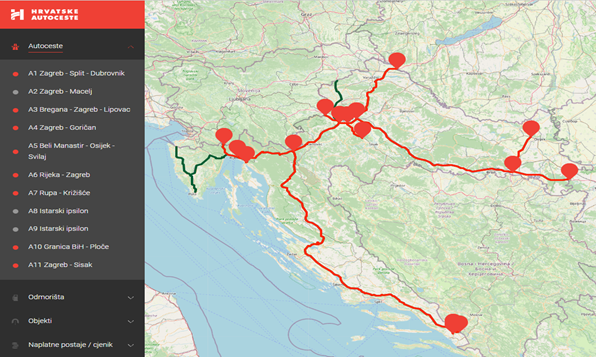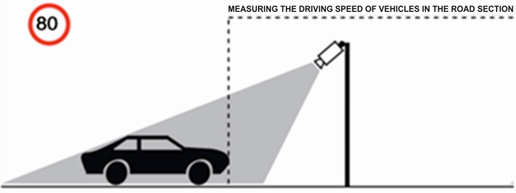
The speed control project is recognized as a strategic road safety project of the Republic of Croatia and is included in one of the main documents of the Republic of Croatia, specifically in the National Road Safety Plan of the Republic of Croatia for the 2021 to 2030 period as adopted by the Government of the Republic of Croatia. The National Plan is harmonized with the world and European guidelines in the field of road safety, and during its development good practice and positive European and world guidelines were taken into account, especially the guidelines defined by the Valletta Declaration, EU Framework Policy for Road Safety (EU Road Safety Policy Framework 2021-2030 - Next Steps Towards Vision Zero), towards 12 voluntary global targets for road safety and the Stockholm Declaration on Road Safety (Third Global Ministerial Conference on Road Safety: Achieving Global Goal 2030). Common to all these guidelines is to improve road safety in achieving the goal, which is 50% less deaths and serious injuries to road users by 2030. Recognizing the above, the Republic of Croatia has recognized the importance of continuing to invest in road safety in order to achieve the set goals.
Assisted by the Ministry of the Sea, Transport and Infrastructure and the Ministry of the Interior the company Hrvatske Autoceste d.o.o. undertook the design development of the speed detection system on motorways in the Republic of Croatia and the documentation is now completed.

The combined length of these motorways is 1086,1 km. The A1 motorway (Zagreb – Split – Dubrovnik) is the longest motorway in Croatia. The motorways A1, A3, A4 and A6 are a part of the Core Network within TEN-T Network, while motorways A5, A7, A10 and A11 are a part of the Comprehensive TEN-T Network.
The implementation of the speed detection system on motorways will yield the following benefits:
- Better management of traffic safety will be achieved by decreasing the speed of traffic flow and speed deviations. There will be fewer crashes and fewer skidding off motorways given that at lower speeds drivers will have more time to react and a shorter braking distance, and if a traffic accident does occur, the consequences will be "milder" due to lower speeds;
- With the speed control the harmonization of traffic flow will be achieved – moving speeds will be steady, which will result in greater vehicle flow and smaller queues in peak periods;
- By increasing the flow rate and reducing the average speed of the traffic flow, fuel consumption will decrease, and consequently the amount of exhaust gases and particles created by fuel combustion;
- The reduced number of traffic accidents will also mean lower social costs incurred as a result of traffic accidents (fatalities, material damage, medical treatment, insurance...).
Possible ways of speed measuring
The design envisages four methods of measuring vehicle speed on motorways:
- Measuring the speed of vehicle movement in the road section with built-in speedometers - a method of measurement where the speed of the vehicle is determined by built-in speedometers whose operation is based on the radar Doppler effect or speed measurement using laser technology;

- Measuring the moving speed of vehicle on a road section with built-in gauges – a measuring method where the speed is determined by detecting and identifying the observed vehicle at the point of entry and exit based on the measured portion and by knowing the distance between the entry and exit points and the time required to run that distance, the average moving speed is established

- Measuring the speed of vehicles on parts of the motorway where works are temporarily carried out - a method of stationary speed measurement on sections with temporary hazard by using stationary speed gauges independently of the speed measurement method (Doppler radar effect or laser).
- Measuring the driving speed with the equipment installed on the patrol vehicle.
“The speed monitoring model on motorways has been introduced by many European countries, and the goal is not repression but prevention through driver awareness. Croatia and specifically Hrvatske Autoceste wish to improve the traffic safety on its motorways, reduce the number of traffic accidents and thus join the ranks of European countries with the policy aimed at the complete elimination of traffic fatalities through the implementation of the speed control system which is due in the forthcoming period.”- points out Mr. Boris Huzjan Director of Hrvatske Autoceste d.o.o.







